- Yunnan -
Differing much from any other places in China, Yunnan is an exotic, amazing and unforgettable place, if you travel around Yunnan and see everything with your own eyes, it’ll make you believe that these words are true. Being one of the most popular tourism destinations, here you will find that this is such a pure place which contrasts as far as you can feel the harmonic neighborhood of high mountains, tropic forests, waterfalls, and distinct folk customs.
Yunnan is so popular and attractive tourism destination as far as when you travel Yunnan you have an opportunity not only to visit the best places in Yunnan and enjoy the fascinating sightseeing and attractions but also spend an unforgettable time on such a diverse minority group people living places. Yunnan as one of the largest provinces in China, it becomes an important and most attractive tourism destination nowadays. In case you decide to travel Yunnan, we suggest that the best places in Yunnan or even in China such as Shangri-La, Lijiang, and Dali and so on.
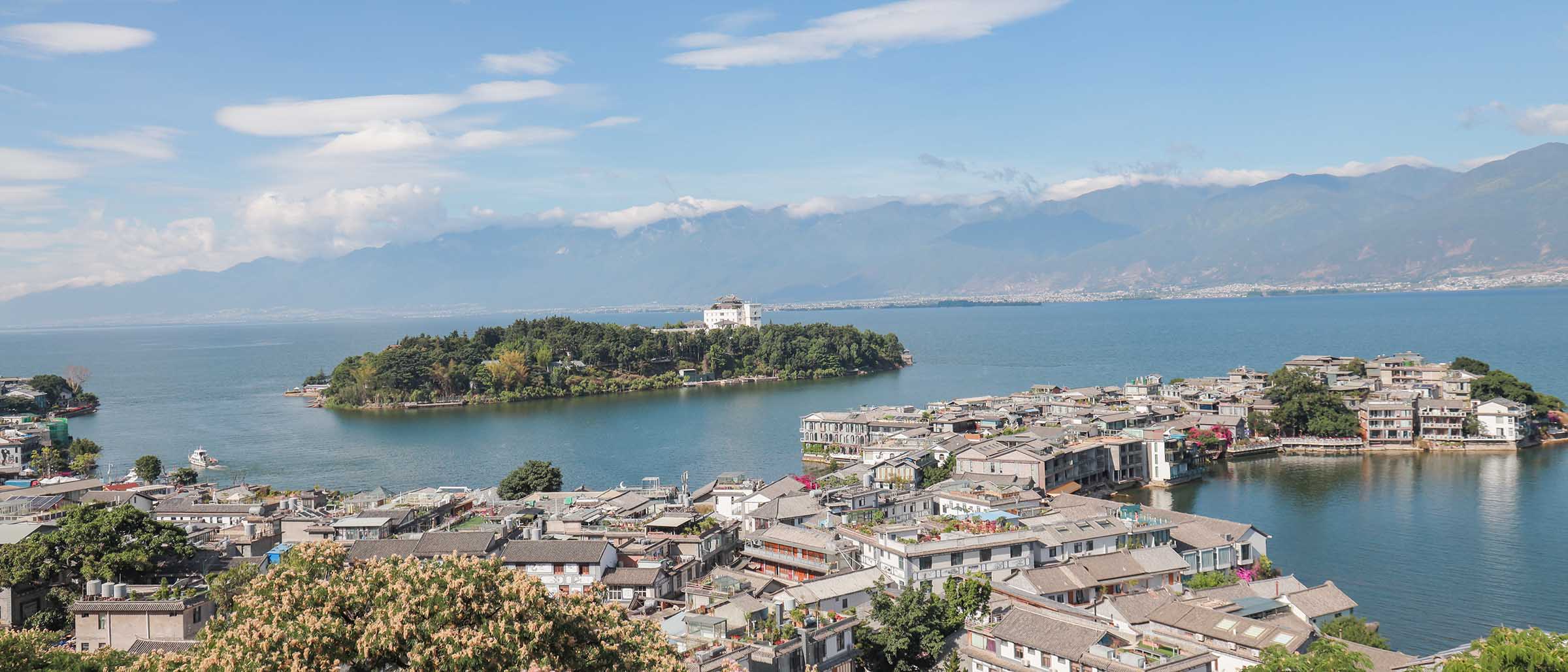
Basic Information
Chinese Name: 云南(Yun nan)
Location: Southwestern in China, borders Guangxi Zhuang Autonomous Region and Guizhou Province in the east, Sichuan Province in the north, and Tibet Autonomous Region in the northwest, and shares a border of 4,060 km with Myanmar in the west, Laos in the south, and Vietnam in the southeast.
Provincial Capital: Kunming
Area: Total area is394,000 square kilometers and the average elevation is 2,500-3,000meters
Famous Cities: Kunming, Dali, Lijiang, Shangri-La, Xishuangbanna
Population(2018): Yunnan has a population of 48.300 million (as of 2018)
Major Ethnic Groups: Yi, Bai, Hani, Zhuang, Dai, Miao
Yunnan History
Yunnan used to be an independent kingdom which was occupied by a large number of non-Chinese aboriginal peoples who lacked any strong political organization during the Qin and Han Dynasties (201BC-263AD). During the Tang Dynasty (618-906), the local minority Bai established a powerful kingdom, Nanzhao, south of Dali. Initially allying its power with the Chinese against the Tibetans, this kingdom extended its power until, in the middle of the 8th century, it was able to challenge and defeat the Emperor's armies, Tang troops. It took control of a large slice of the south-west and established itself as a fully independent entity, dominating the trade routes from China to India and Burna.
Dali Three Pagodas The Nanzhao kingdom fell in the Song Dynasty (960-1279)and was replaced by the kingdom of Dali (the name Dali has been used until today for the Bai Autonormas Prefecture). During the Yuan Dynasty (1280-1368), Khubla Khan conquered the area. This part of the south-west was finally integrated into the empire as the province of Yunnan. During the Second World War Yunnan was the strong point of defense against the Japanese invaders. The "Burma Road" ended in Yunnan and the "Flying Tigers" earned their reputation flying military supplies and equipment into this province. After World War II Yunnan was largely spared the fierce fighting between the Communists and Nationalist/Imperialists with only a few small skirmishes taking place on Yunnan soil.
Yunnan Geography
Yunnan is located in the southwest and borders Sichuan to the north, Tibet to the northwest and Guangxi and Guizhou to the east while sharing a western border with Myanmar, a southern border with Laos and a southeastern border with Vietnam. It is China’s sixth largest province, covering an area of 394,000 sq. km.
Yunnan possesses a mountainous terrain that stretches across the province and reaches a high point of 6,740m at Kawagebo Peak in Deqin. The average elevation is 1,980m. In addition to the vast mountains, Yunnan is also characterized by canyons and rivers, specifically the three parallel rivers that include the Nu River, the Yangzi River and the Mekong.
There are also many lakes in Yunnan that have provided a foundation for human civilizations for over a million years, most notably Dian Chi in Kunming, Erhai Lake in Dali and Lugu Lake in northern Yunnan.
In the east, Yunnan covers a limestone plateau with dramatic karst formations and southern Yunnan covers a lush, tropical jungle along the border of Vietnam and Laos.
Yunnan Climate
Yunnan enjoys a tropical highland humid monsoon climate, characterized by cool summers and warm winters. The annual average temperature lies between 13-20°C; January average temperatures range from 8°C to 17°C, and July averages vary from 21°C to 27°C. The annual rainfall is 1100 mm, with over half the rain occurring between June and August.
The fair weather is the result of the province's location on south-facing mountain slopes, receiving the influence of both the Pacific and Indian oceans. The plateau region has moderate temperatures. The western canyon region is hot and humid at the valley bottoms, but there are freezing winds at the mountaintops.
In Kunming, it always feels like Spring. In Dali, it is, despite its the altitude of 2000 meters, most often warmer. Sometimes a cool fresh wind blows through the area. This is the result of Dali's location between the beautiful Lake Erhai and the Cangshan mountains, rising up to a height of 4200 meters (1300ft).
Lijiang is located at an altitude of 2200 meters. It can get quite warm during the day, but in the evening it soon turns chilly. In Shangri-La, the sun may be even stronger than in Lijiang. But, because of the town's altitude at a height of 3200 meters, and its situation close to Tibet and the Himalayas, warm clothing is advised for evenings and nights. The southern part of Yunnan (Xishuangbanna) enjoys sub-tropical to tropical temperatures.
Yunnan also is very beautiful and fairly warm during winter. In January the trees are full of flowers, with sometimes some snow left on the tops of the mountains.
In fact, there is not such a thing as "Best time to travel" applicable in Yunnan. It is actually very pleasant all year round.
Yunnan Minority Culture
In total, you can find 56 ethnic minorities. Only in Yunnan, you encounter 26 officially recognized ethnic minorities, among which are the Bai, Dai, Yi, Naxi, Hui, Mosuo, Hani, Miao, Pumi, Lahu, Tibetans, and Lisu. Just to mention a few.
Different ethnic minorities have different customs, etiquettes, costumes, religious beliefs and even languages. Their colorful lifestyle, dancing, and singing are a feast to your eyes and ears.
These 26 minorities form one-third of the total population of the province. Besides, the province is home to around 30 million Han Chinese. The Han constitute the majority of the people in China.
Yunnan is one of the most ethnically diverse provinces in Asia. The Bai and Dai are among the few registered ethnic minority groups to have populations over the one million mark. Yi, Naxi and Hani ethnic groups have also surpassed this mark. The Miao, Lisu, Hui, Lahu, Wa, Yao, Jingpo and Tibetan minorities all have populations exceeding 100,000, while the Bulang, Buyi, Pumi, A'chang, Nu, Jino, De'ang, and Mongolian groups each exceed 10,000. The Shui, Manchu, and Dulong have more than 4,000 members each.
The Southwest had been invaded many times in the course of the Chinese emperors’ attempts to unify the empire. Through these invasions, culturally uniform Han Chinese standards and values were introduced to ethnic minorities’ civilizations. On the other hand, inter-ethnic and cross-cultural exchanges were common along the trade routes in the mountainous regions of Yunnan Province.
Yunnan Cuisine
With its rich biodiversity and diverse ethnic minority population, Yunnan is a tantalising melting pot of exotic ingredients, vibrant flavours, and ethnic flair. Yunnan cuisine is sometimes referred to as Dian cuisine and is known for its moderately spicy and sour dishes that boast an unexpected sweetness. Each signature dish attempts to preserve the original taste of each ingredient used and this is what makes Yunnan’s style so unique.
Mushrooms and mints feature as a prominent ingredient in many dishes, but other unusual ingredients include flowers, ferns, algae and even insects. Just don’t try to worm your way out of eating these peculiar treats, or you’ll regret it! In the south of Yunnan, the signature dishes have also been heavily influenced by Burmese, Lao and Thai style cuisine, meaning that ingredients such as lime juice, coconut, and palm sugar feature widely.
Tourism Resources
China's Yunnan Province is rich in natural resources and ethnic minority cultures. It has over 25 different ethnic minority groups and some of the most beautiful ancient towns in China. Visitors to Yunnan can witness the ancient ethnic minority cultures that have been handed down for centuries. The ancient towns of Lijiang, Dali, Shangri La, and the Xishuangbanna Dai Autonomous Prefecture are very popular destinations in Yunnan Province. The Three Parallel Rivers of Yunnan Protected Areas is one of the most exotic and enchanting areas in China. The charms of it are composed of torrential rivers, soaring mountains, splendid ethnic cultures, rare plants, and animals, highlighted by world-famous Lijiang Old Town and Shangri-la, a lost paradise for tourists.
In the north, there is the old Tea and Horse Road which leads to Tibet; the region is also the origin of tea in China. Due to the topography, Yunnan has the most abundant vegetation of the country. Additionally, the snow covered peaks add an extra charm to the region.
In contrast, southern Yunnan has a very impressive tropical region. The famous Xishuangbanna gives the impression of a trip to South America in the Amazon rainforest. Near Kunming, capital of the province, there is the end of the karst peaks chain started in Guilin area, several hundred kilometers away. This splendid mountain ends in the amazing Kunming Stone Forest.
Folk Festivals
Yunnan Province lying in the Southwest China has 26 ethnic minorities such as Yi, Bai, Dai, Hani, Miao, Hui, Naxi, Lahu, Jingpo, Yao, Achang,etc. It has the largest number of ethnic minorities in China which promotes its colorful culture and customs.
Every ethnic minority has its special festivals and celebrations. Numerous folk celebrations are held during the festivals in Yunnan.
Water Splashing Festival
Water Splashing Festival is the grandest festival for Dai ethic minority which is mainly celebrated in Xishuangbanna Prefecture. The festival is Dai people’s New Year which is around April 15 in the Gregorian calendar every year. Usually, the celebrations last three days and the third day is the New Year in Dai’s calendar. In the morning, all the Dai people wearing their festive costumes go to temple to wash the Buddha with clear water. Then they begin to express their sincere blessings by splashing water to each other. The clear water with best wishes can help people get rid of diseases and difficulties. People are pleased with being poured water which means more blessings.
The Torch Festival
The Torch Festival is one of the Yi people’ traditional festivals, originated in Yi regions in Yunnan, Guizhou and Sichuan Provinces. Bai, Naxi, Jino, Lahu ethnic minorities also celebrate the important festival. Naxi Torch Festival in Lijiang is the most famous festival among all the celebrations.
The celebrations are held on June 24 or June 25 in Chinese lunar year. A three-day celebration is with some different activities. People light a big torch or a bonfire in front of the house in order to pray the new life in the next year. The torch or the bonfire should be on for 3 days. Some young men go through the farmland and hills with small torches to pray a bumper harvest in the new year. Besides, there are horse racing, bullfighting, archery, wrestling, tug-of-war, swing matches and other entertainment activities during the Torch Festival.
Dage Festival
On February 8th in Chinese lunar calendar, Yi ethic minority in Dayao County collect all kinds of colorful flowers and tie up into flower arches or flower pergolas which symbolize a good luck. People also decorate cattle, sheep, houses, and fields with wild flowers. Yi people will get together to sing and dance with the instrument Lusheng.
There is a wide known legend of Miyilu who is a beautiful and smart girl. In order to help other girls get rid of getting harm by the bully she made a pretense of marrying him. In the end she died because the bully and she drank the poisonous wine in the wedding. Yi people in this region hold a grand flower arrangement in commemoration of the goodness Miyilu.
March Fair
March Fair, also call Sanyuejie in Chinese is celebrated by Bai people in Dali which is another famous place after Lijiang in Yunnan Province. The celebrations are held in the ancient Dali town during March 15 to March 21 in Chinese lunar year. The March Fair of Bai ethic minority is evolved from in ancient Buddha temple fair with a history of more than 1000 year. There are big trade fair, horse racings, dances during the March Fair. Thousands of people take part in the trade fair when the festival comes.
Miao people’s Huashan Festival
Huashan Festival is one of the most important festivals to Miao People. The time of this festival varies in different places. Usually, Huashan Festival in South Yunnan is celebrated from Spring Festival to January 15th in Chinese lunar Calendar. However, the celebrations are held on May 5th in Chinese lunar year in Kunming, Chuxiong and Zhaotong in Yunnan.
A large number of Miao people get together in the dance ground with festive costumes. Young people can express their love to each other. There is a ceremonious dance in the centre of the ground. Additionally, the celebrations also include climbing the pole, horse racing, bullfighting and archery matches.
Lisu Sword Pole Festiva
February 7th in Chinese lunar year is Lisu people’s Sword Pole Festival. The celebrations for the festival are held in Lisu hamlets along the Nu River (Nujiang in Chinese). A few strong young men jump into a sea of fire with bare feet and perform a variety of stunts. They also climb a pole with sharp swords without shoes and act some difficult moves on the dangerous pole. These performances are not only a kind of folk traditions and customs activities, but also show people the Lisu people’s extremely hard and bitter life experience and their indomitable spirits. At night, there are dances and singing around a bonfire.
Jade Dragon Snow Mountain
Chinese name: 玉龙雪山 (Yu Long Xue Shan)
Location: Yulong Naxi County, Lijiang City, Yunnan Province
Ticket: Entrance ticket CNY130.00,combo ticket CNY280.00 includes the snow mountain, Yushui Village (also called Jade Water Village), Dongba Valley, Yufeng Temple, Yuzhu Qingtian Scenic Resort, Dongba Kingdom, Dongba Gods' Garden and Baisha Mural). Round trip cable car of Glacier Park CNY120.00, round-trip cable car of Yak Level Ground CNY 60.00, round-trip cable car of Spruce Level Ground CNY 55.00
Estimated tour time: Half day to one day
Recommended time to visit: Whole year round
Nearby attractions: Lijiang ancient town, Lashi Lake.

Located in Yulong Naxi Autonomous County, Lijiang City, Yunnan Province, Jade Dragon Snow Mountain is China’s southernmost glacier. The mountain belongs to the south section of Shaluli Mountains of Hengduan Mountains. It is the mountain of lowest latitude and highest altitude in the northern hemisphere. Jade Dragon Snow Mountain is considered a sacred mountain by the Naxi nationality. Having 13 peaks, the silhouette of the mountain looks like a dancing silver dragon and was thus named Jade Dragon Snow Mountain. Its main peak, Shanzidou, has an altitude of 5,596 meters and is covered by snow all year around. Jade Dragon Snow Mountain is famous for its height, beauty and peculiarity. The main scenic spots are Glacier Park, Ganhaizi Meadow, Blue Moon Valley, Spruce Meadow and Yak Meadow.
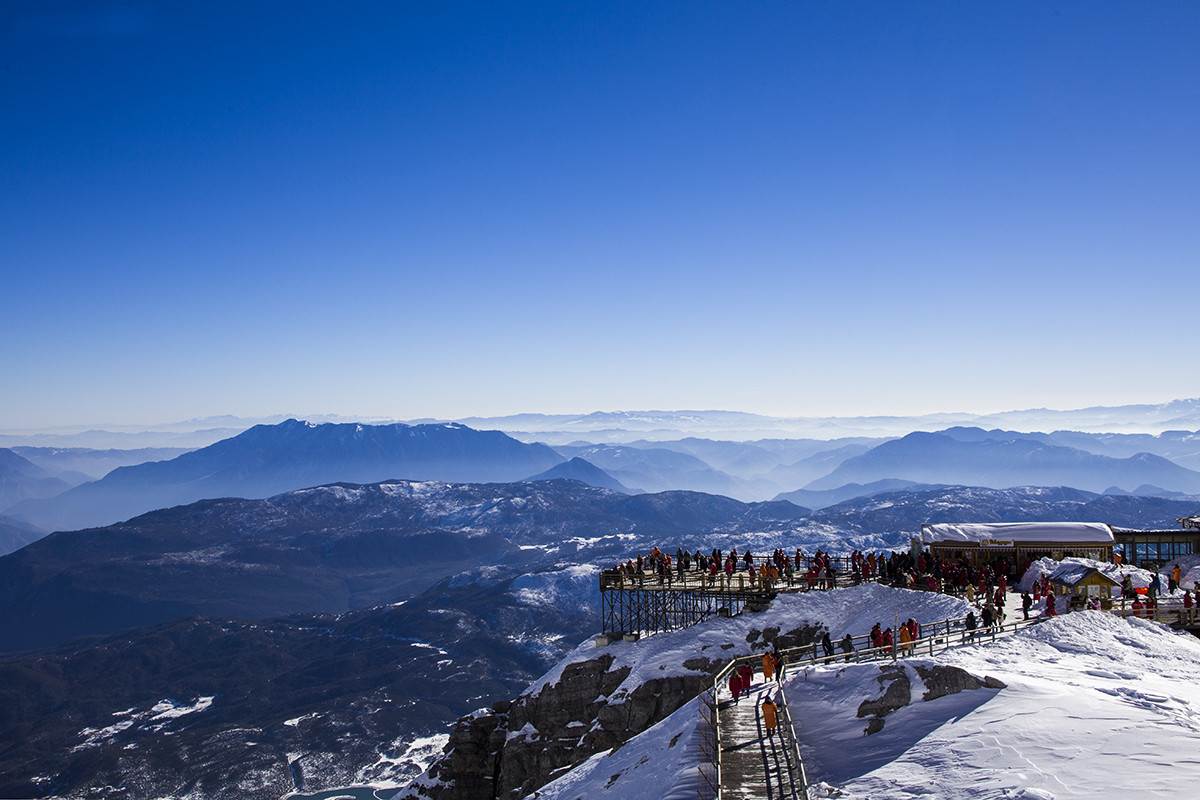
Arractions of Jade Dragon Snow Mountain
Blue-Moon Valley
There is an extremely blue river meandering through a lush valley of Jade Dragon Snow Mountain. Seen from a distance, it resembles a blue crescent moon inlaid at the foot of the mountain. That’s how this place got its beautiful name – Blue Moon Valley. However, blue is not the only looking of the river. If it rains, the white mud and limestone rubbles at the riverbed will be swirl up, making the water as white as milk.

White Water River
The White Water River is converged by the melted snow and ice running down from Jade Dragon Snow Mountain. The water is freezing; even in summer, people still cannot bear the piercing cold when they can’t help dabbling in the river. But it is a favorite iced drink in summer. Legend has it that, when two Naxi youngsters fall in love, the boy will be tested by standing barefoot in the cold river in winter to show his committed love for the girl. Folks believe that this tested love will last forever in the presence of the holy snow mountain. So, the river is considered the Love River in local people’s mind.
The Glacier Park
Jade Dragon Snow Mountain is the mountain of lowest latitude in Eurasia that has present glaciers, so you can see maybe for the first time the various kinds of present glaciers and the remnants of ancient glaciers that are the essence of the global glaciers. Moreover, you will be amazed at the very charming scenery of the various shapes of serac pillars at the end of the glaciers, which shows blue and green under the sunshine and called the “Green Snow Peaks”. And you can see this wonderful view by taking the tramway up to the park at 4680 m.

Spruce Meadow
The Spruce Meadow is also called the “Third Country for dying for love”, and according to the materials of Dongba, one person can live without worry in the “Jade Dragon Third Country” for the abundant beautiful clothes, delicious food, etc. And if a couple die for love at the foot of Jade Dragon Snow Mountain, their souls will go to this “country” and live happily. So it is famous worldwide as the place for dying for love.
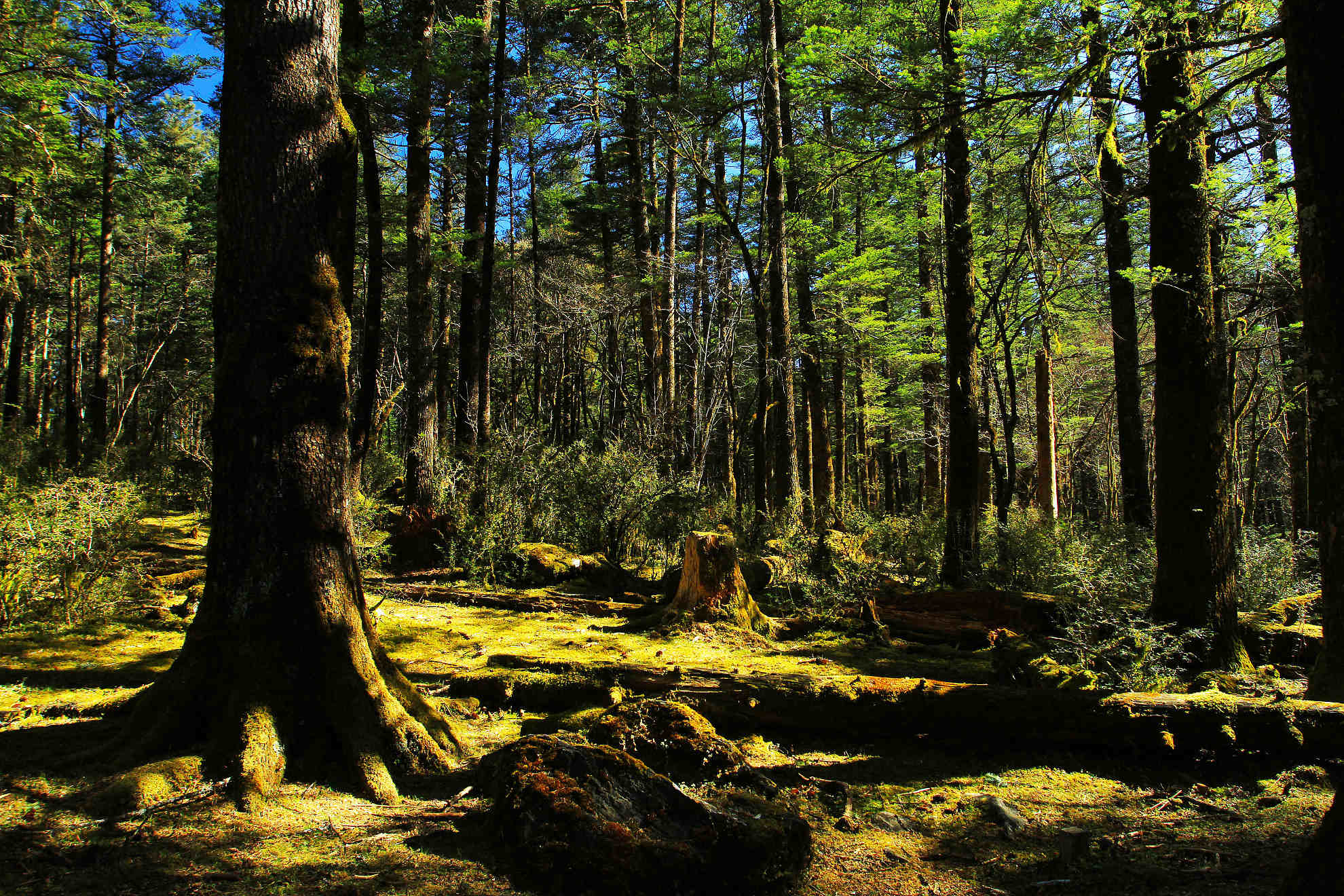
Yak Meadow
Yak Meadow at the northern edge of Jade Dragon Snow Mountain has different but various picturesque sightseeing in each season. Here you can both appreciate the splendid image of the snow mountain at the best position, and see the local people driving their domestic animals up to the mountain. You can feel the original and simple life in this great place.
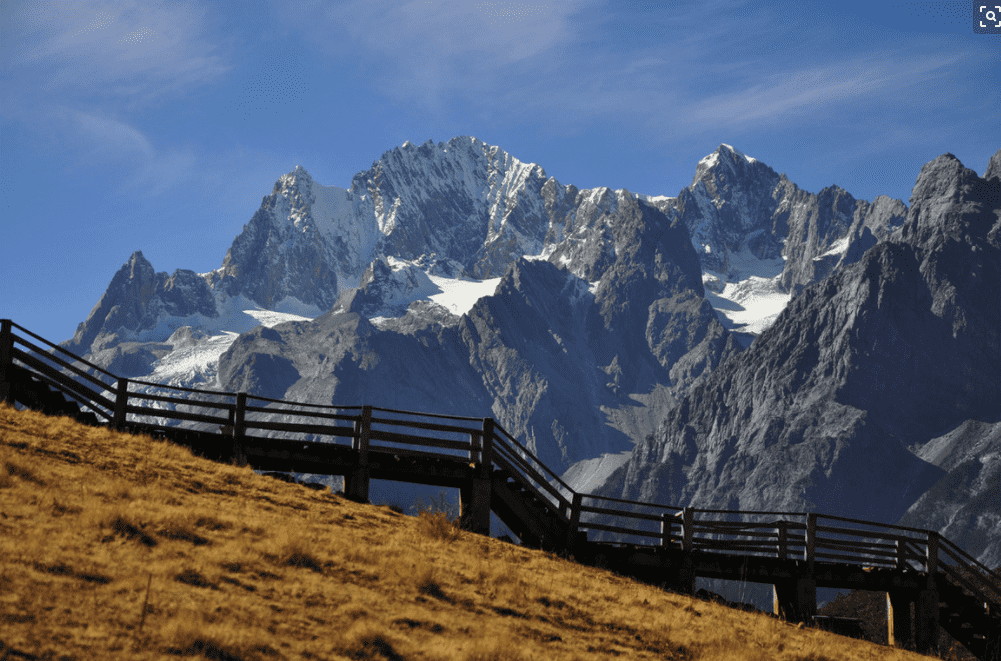
Impression Lijiang Show
The Impression Lijiang is a large-scale live-action performance directed by the world famous director Zhang Yimou who is the chief director of both the opening and closing ceremonies of the 29th Olympic Games held in Beijing in 2008. 500 local people from 10 minority nationalities perform this amazing show at the height of 3100 m. This show provides you a “BOOM” to your eyes and ears, with their wonderful dancing and singing and the unique fine background of the white Jade Dragon Snow Mountain as well as the blue sky.
Watching this great performance, you can know Lijiang from many aspects. The gallant men, respectable women, emotion to life and nature, historical scene on the Ancient Tea Horse Road, love to different people, hope for the sacred kingdom, and the sincere heart to the heaven, etc. all express the pure, hospitality and optimism of the local people in Lijiang.
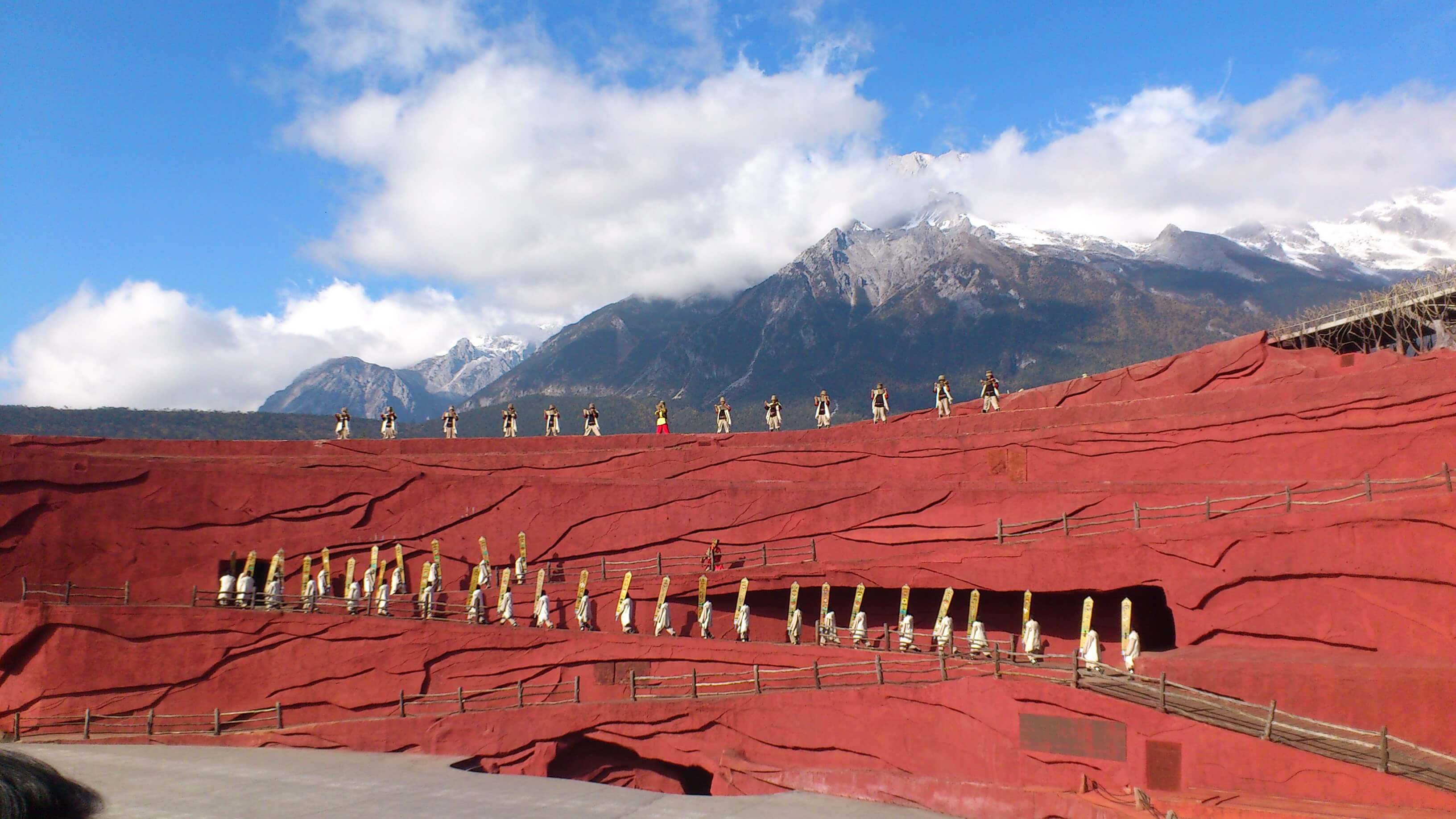
Cable cars
Big Cable car: The big cableway is the most popular cableway in the scenic spot. The cableway will take tourists from Ganhanzi Meadow to the Glacier Park at an altitude of 4,506 meters. Getting off the cable, you can walk along the plank road on the glacier to the highest point with an altitude of 4,680 meters to enjoy the beauty of snow mountain and glaciers at more closely. The ticket costs RMB 180. The cableway will close on windy days. Please pay attention to official notifications.
Spruce Meadow Cable car: The cableway is located by the banks of Baishui River at the foot of the snow mountain. You can get there by taking the green bus in the scenic area. Taking the Spruce Meadow Cableway, you’ll arrive at Spruce Meadow at an altitude of 3,240 meters, where you can best appreciate the Jade Dragon Snow Mountain.
Yak Meadow Cable car: 15 kilometers to Spruce Meadow, Yak Meadow is located on the other side of the Jade Dragon Snow Mountain. On the Yak Meadow, you can appreciate the Jade Dragon Snow Mountain from another perspective.

Jade Dragon Snow Mountain Travel Tips
Jade Dragon Snow Mountain Climate
On Jade Dragon Snow Mountain, the yearly average temerature is 11.3 ℃, the average temperature of the colddest month is 3℃ while the average temperature of the hottest month is 17℃. The yearly precipitation of Jade Dragon Snow Mountain is about 1000~1200mm; the rainfalls mainly come during June to October, taking up 80% of the overall precipitation of a year. However, there is few rainfalls during Novermber to Apirl of the next year.
The Best Time To Visit The Jade Dragon Snow Mountain
Jade Dragon Snow Mountain is suitable for traveling in whole year generally. Different season will see different scenery. In summer, you can see the green forest surrounding the while snow peak; in winter, you can see a snow kingdom covered by white color everywhere.especially in January, February and April, when the sky is clear and you can have a better view of the snow mountain the beautiful natural scenery.
Other Travel Tips
The altitude of Jade Dragon Snow Mountain is so high that it is necessary for tourists to rent down jackets when the wind is strong. You’d better not rent it at places where provide green cars, which is more expensive than that on the mountain, taking 30 yuan as rental and 300 yuan as deposit per jacket. It is a better choice to rent the jacket after taking green car and arriving at ropeway station on 3356 meters or 4506 meters. In addition, some hostels in Lijiang Old City provide cost-free down jackets for their customers. They also help customers to book tickets of ropeway in case of waiting in line to buy tickets on the mountain; however, tourists still need to wait in line if they choose the big ropeway.
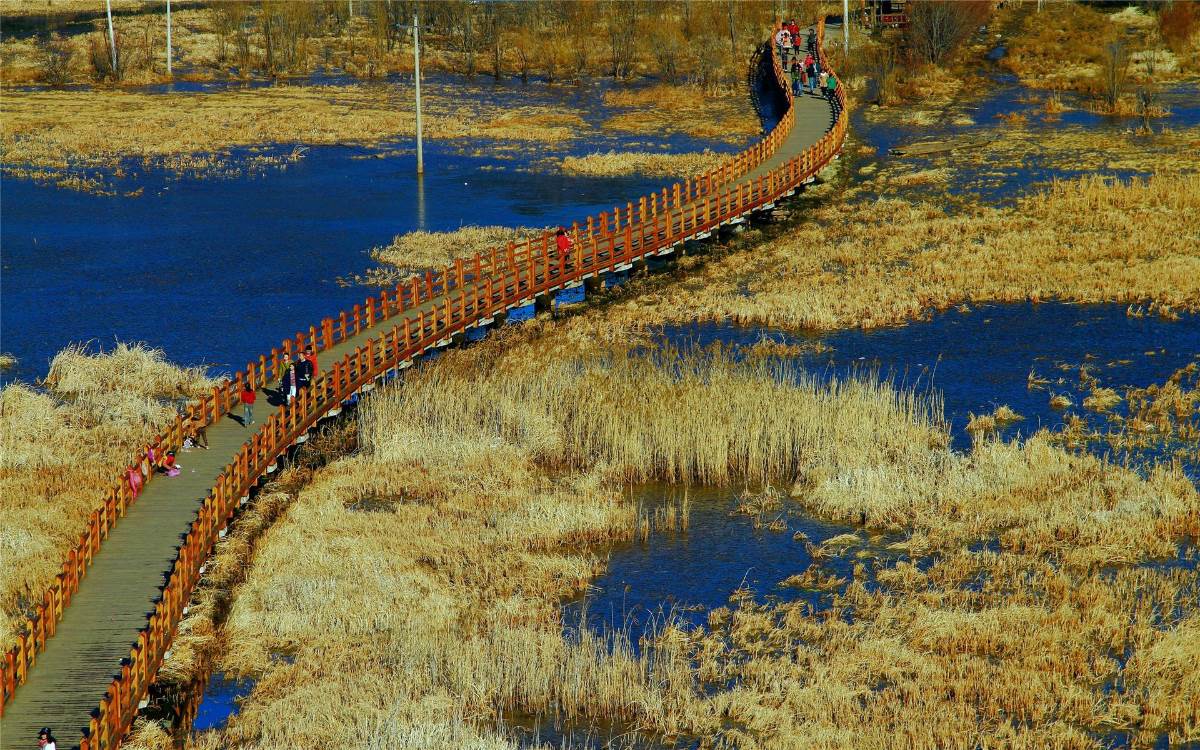
- $1168.00
- 8D7N DAYS
01. Driving through one of China's most amazing expressway-Yaxi Expressway, which is acclaimed as an "expressway in the clouds" as it ascends 7.5 meters for every kilometer.02. Take the famous pig-boat leisurely sailing on the …
Read More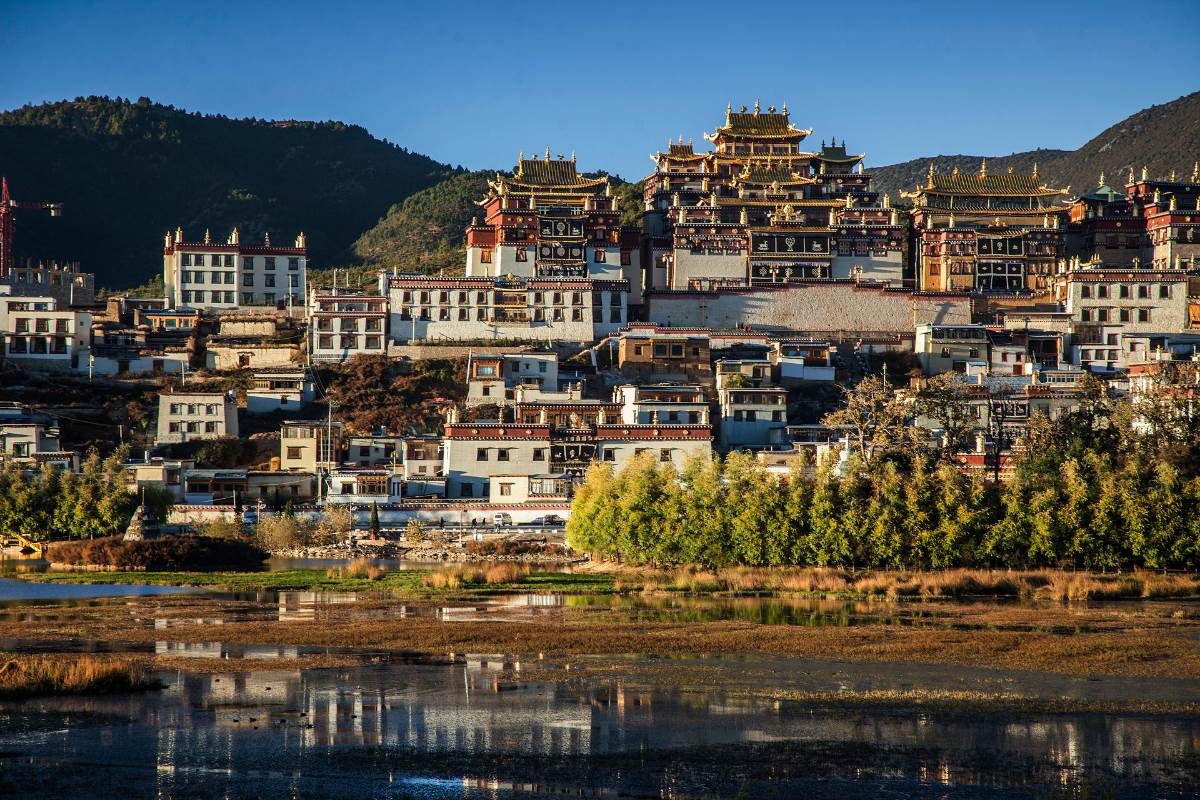
- $1498.00
- 11D10N DAYS
01. Have a walk in the believed-to-be “Paradise of Photographers” Xinduqiao to experience local Khampa Tibetan landscape and local people,enjoying the endless sub-alpine meadow, scattered yaks in Xinduqiao. 02. Visiting the highest town in…
Read More
- $898.00
- 7D6N DAYS
01. Immerse yourselves in old towns in Dali, Lijiang and Zhongdian, admire colorful minority costumes and exotic tradition cultures, meet the hospitality of unsophisticated Tibetan people…02. Enter deep into the Tibetan world of Shangri-La,…
Read More